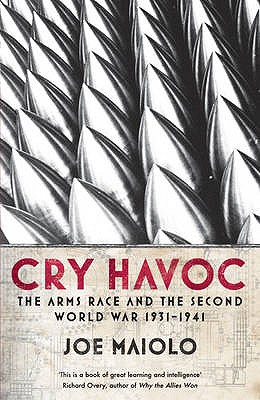Cry Havoc
by Joe Maiolo
The arms race, on the run up to the Second World War, followed the faultless logic of paranoia. Before the First World War, the Great Powers measured the strength of their rivals by comparing the size of armies and navies, and the money spent on them. Afterwards, having learned the lessons of ‘total war’, they looked at the capacity of nations to mobilise their economies and populations for war. Deep planning, they realised, was necessary to prepare for potential conflicts; but with this attitude came a sense that society might need to be in a state of perpetual readiness for conflict, and a potential openness to totalitarian levels of state control in ensuring that readiness. In Cry Havoc Joe Maiolo shows, in rich and fascinating detail, how the arms race between the Great Powers developed. Where previous histories have looked at how individual nations responded to the challenges of the time, Maiolo reveals the full complexity of the arms race by looking at competition between nations, at how nations reacted to the moves of their rivals. Maiolo provides a vivid portrait of the thinking of those making the key decisions - of the thinking of Hitler, Mussolini, Chamberlain, Stalin, Roosevelt - and reveals the full extent of the dilemmas confronted by the leaders of the western democracies, who seemed at times to be faced with a choice between defending their nations and preserving the essential democratic nature of the societies they sought to defend. Cry Havoc is an absorbing account of a time of extreme tensions, showing how the deadly game of the arms race led, ultimately, to an unleashing of the dogs of war.

